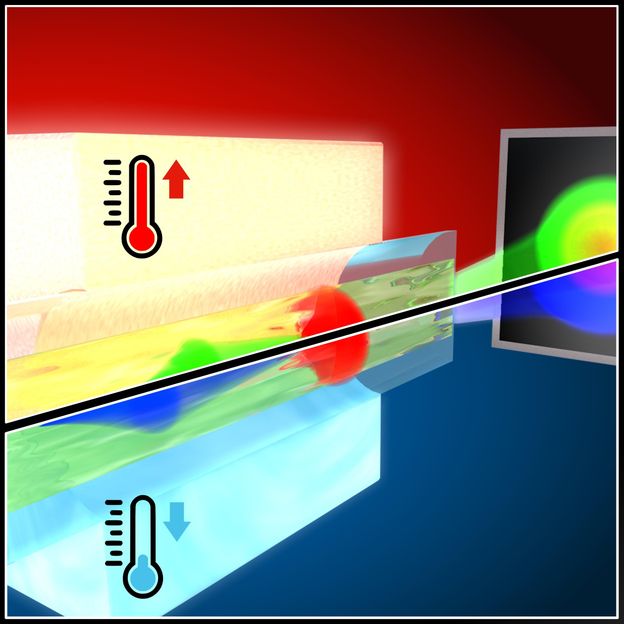Scientists probe electronic angular momentum to a chemical reaction for the first time
A chemical reaction can be understood in detail at the quantum state-resolved level, through a combined study of molecular crossed beam experiments and theoretical quantum molecular reaction dynamics simulations.

he left circles are the experimental measurement of the product state-resolved differential cross sections of the F+HD reaction, the right image is the related partial-wave resonance wavefunction of the reaction.
DICP
At a single collision condition, the molecular crossed beam apparatus is able to detect the scattering angle-resolved product with rotational state-resolution. Whereas, with accurate global potential energy surface, quantum reactive scattering theory is able to predict the corresponding reactive scattering information.
In previous studies, the chemical reaction dynamics was revealed only with the product rotational state-resolution. And the investigation of a reaction at a finer level would be an inspiring break through.
Recently, Professor YANG Xueming from the Dalian Institute of Chemical Physics (DICP) of the Chinese Academy of Sciences (CAS) and Professor WANG Xing'an from the University of Science and Technology of China developed molecular crossed beam apparatus with threshold ionization velocity map imaging technique, enabling to probe the scattering product with high angular resolution with quantum rotational-state recognition.
With this powerful apparatus, in combined with new quantum reactive scattering theory developed by Professor SUN Zhigang from the DICP, which included the electronic angular momentum effect, the electronic angular momentum effect to a chemical reaction was revealed for the first time.
This finding was published online in Science.
There is distinguished reactive scattering quantum resonance in the F + HD (the Fluorine atom with the HD isotope of the H2 molecule) reaction. It has been taken as the prototype to resolve partial wave resonance structures in a chemical reaction.
With this feature, the scientists thought that the role of the electronic angular momentum of the F atom in this chemical reaction would be recognized. The F atom was characterized by p electronic orbit with l=1, which could influence the partial wave resonance structures.
It was found that, by including the electronic angular momentum, the single partial wave structure would split into four-fold partial wave resonance structure, which was capable of varying the angular distributions of the chemical product.
The energy of the electronic angular momentum is much smaller than the rotational energy of a diatomic molecule (~ several tens wave number). Its influence to a chemical reaction is subtle and difficult to detect.
Other news from the department science

Get the chemical industry in your inbox
By submitting this form you agree that LUMITOS AG will send you the newsletter(s) selected above by email. Your data will not be passed on to third parties. Your data will be stored and processed in accordance with our data protection regulations. LUMITOS may contact you by email for the purpose of advertising or market and opinion surveys. You can revoke your consent at any time without giving reasons to LUMITOS AG, Ernst-Augustin-Str. 2, 12489 Berlin, Germany or by e-mail at revoke@lumitos.com with effect for the future. In addition, each email contains a link to unsubscribe from the corresponding newsletter.
Most read news
More news from our other portals
Last viewed contents
Max_Q
Hückel_method
Shining new light on air pollutants using entangled porous frameworks
With the Technology Center, L. B. Bohle merges all steps of continuous production for the first time
Amersham Biosciences Updates Its Chromatography Handbook Reference Set - Handbooks Provide Detailed Descriptions of Common Chromatographic Techniques
MKS Instruments Reports Q2 2015 Financial Results

A Quicker Way to the Deepest Cold - New cooling procedure facilitates the realisation of quantum simulators
SciQuest Announces Agreement with Array BioPharma for New Procurement Software
Gel_point





























































